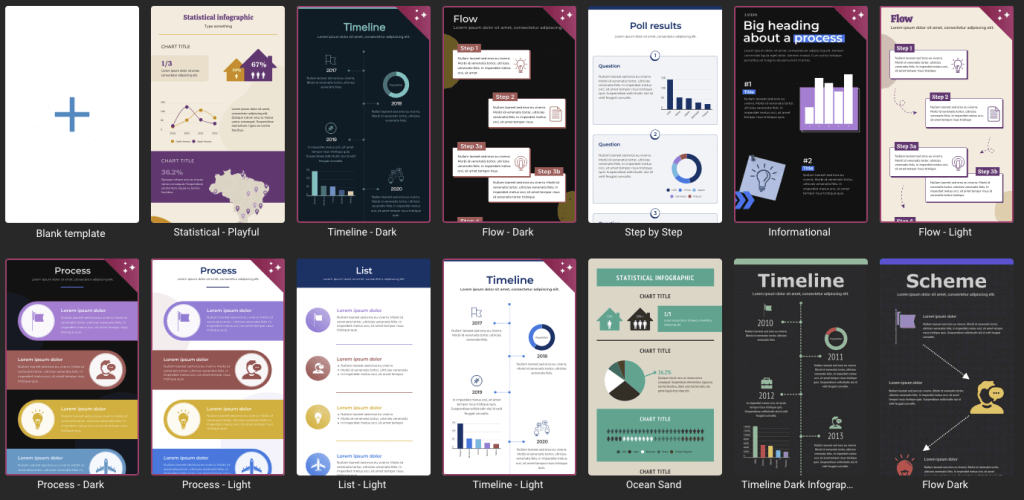19.04.2024 by Anete Ezera
Have you ever stared blankly at a complex recipe, a new software program, or a piece of furniture that seemed determined to remain unassembled? These and many other scenarios prove that clear and concise instructions are crucial. A well-crafted how-to guide can be the difference between frustration and accomplishment, confusion and clarity.
These guides aren’t limited to DIY projects or technical manuals. They saturate our lives, from blog posts outlining the best baking tips to study guides that demystify challenging concepts, and even work instructions that ensure a team operates efficiently. The ability to create an effective how-to guide is a valuable skill for anyone, regardless of profession.
This article will equip you with the knowledge and tools needed to craft the perfect how-to guide, no matter the purpose. We’ll delve into the essential ingredients that make a guide truly exceptional guide and explore how to tailor your guide for specific audiences, from casual blog readers to students and employees. Finally, we’ll highlight Infogram, your go-to interactive visualization tool for creating stunning and informative how-to guides that not only inform but stand out.
Click to jumo ahead:
1. The essential ingredients of a great how-to guide
2. Visualizing how-to guides with Infogram
3. Tailoring your guide: from blog posts to work instructions
4. Tips for a successful how-to guide
5. Conclusion: your guide to a more informed world

The essential ingredients of a great how-to guide
Before preparing your guide, it’s crucial to establish a solid foundation. Here are the key ingredients you’ll need:
Know your audience
This is the golden rule of communication. Who are you writing for? Are they complete beginners or do they have some existing knowledge? Tailor your language and level of detail accordingly. Imagine explaining how to tie a shoelace to a child versus an adult who has never worn lace-up shoes. The approaches would be vastly different. By considering your audience’s background knowledge, you can strike the perfect balance between informative and accessible.
Start with a strong foundation
Define the goal: What do you want your readers to achieve after completing your guide? Is it mastering a new recipe, understanding a complex scientific principle, or being able to operate a new machine efficiently? Having a clear goal in mind will shape the entire structure and content of your guide.
Gather your expertise: Ensure you have a thorough understanding of the topic yourself. Research is crucial if you’re venturing into unfamiliar territory. The more confident you are in your knowledge, the clearer and more reliable your instructions will be.
Craft a clear structure
This is the roadmap for your readers. A well-structured guide is intuitive and effortless to navigate, ensuring your audience retains the information effectively. Here’s how to craft a clear structure that empowers your readers:
Building block by block: Imagine your guide as a set of Lego instructions. Each step should build upon the previous one, leading to a successful completion of the task. That’s why start by mapping out the entire process from beginning to end. This will make sure you have a clear sequence and avoid confusing jumps for your reader. Also, break down complex tasks into smaller, manageable steps that are easy to digest.
Headings and subheadings: Think of headings and subheadings as chapter titles in a book. They provide a quick overview of what to expect in each section, allowing readers to easily find the information they need. Use clear, concise, and action-oriented language for your headings. For example, instead of a generic heading like “The Process,” use something like “Prepare the Ingredients” or “Assemble the Cake Layers.” Subheadings can then delve deeper into specific details within each main step.
Bullet points and numbered lists: Bullet points excel at listing ingredients, tools, or quick reminders. Imagine a recipe – bullet points would be ideal for listing the required ingredients. Numbered lists, on the other hand, are beneficial when outlining a sequence of steps. Think about assembling furniture – numbered lists would be perfect for guiding the reader through each step of the process. By strategically using these elements, you can break down complex information into easily digestible chunks, making your how-to guide user-friendly and efficient.
Visualizing how-to guides with Infogram
Let’s face it, text-heavy instructions can be difficult to digest. Visuals are powerful tools that can significantly boost understanding and engagement. That’s where Infogram comes in:
Infogram is a user-friendly platform that allows you to create stunning and informative visuals to complement your how-to guide. Whether you’re a journalist, a marketer, or an educator, Infogram offers a wide range of features for all types of users with diverse design skill levels:
Interactive charts and graphs
Ditch lengthy data explanations and let charts and graphs do the talking. Visualize trends, compare data points, and illustrate complex processes in a clear and concise way. Imagine explaining the growth stages of a plant – a beautifully designed timeline infographic showcasing seed germination, seedling development, and flowering stages would be far more engaging and informative than a paragraph of text.
Step-by-step infographics
Infogram allows you to create visually compelling infographics that break down each step of your guide into clear, digestible chunks. Imagine a step-by-step infographic showcasing the proper form for different yoga poses. By incorporating clear visuals alongside concise instructions, you can guide readers through each pose with ease, making the learning process more engaging and effective.
Customizable templates
Jumpstart your creative process and save valuable time by leveraging Infogram’s library of professionally designed templates. These templates offer a strong foundation, but don’t feel limited! They are fully customizable, allowing you to tailor the design elements, colors, and fonts to perfectly match your specific content and brand identity. With Infogram, creating high-quality visuals to elevate your how-to guide is easier than ever.

AI-powered features
Craft how-to guides in minutes
Infogram’s AI-powered infographic generator can be a game-changer for creating how-to guides quickly and easily. Simply pick a template that catches your eye, then feed the AI your topic and data. In seconds, it will generate a visually appealing layout tailored to your content, saving you valuable time and effort within your chosen AI template.
AI text editing for refining your ideas
Infogram’s AI can also help you refine your how-to guide text. The AI text editing assistant appears when you select a text block, offering you to shorten, lengthen, or summarize your text into bullet points for improved readability. This can be particularly helpful for ensuring your guide’s written content complements the visual elements seamlessly.
Tailoring your how-to guide: from blog posts to work instructions
Now that you have the essential ingredients needed to create an impactful how-to guide with Infogram, let’s explore how to tailor your guide for specific audiences:
How-to blog posts
Blog posts are a casual and engaging way to share your knowledge with the world. When crafting a blog post how-to guide, keep these things in mind:
Conversational tone: Use a friendly and approachable writing style. Imagine you’re explaining something to a friend over coffee. This will make your guide more relatable and enjoyable to read. Infuse your personality and let your passion for the topic shine through!
Engaging visuals: Don’t underestimate the power of captivating visuals on a blog. Use infographics to break down complex steps in a fun and informative way. Showcase beautiful results (think mouthwatering food photography for a recipe blog) or add a touch of humor with relevant illustrations to keep your readers engaged.
Internal links and calls to action: Guide your readers on a journey through your blog. Include internal links to related content that might further pique their interest. Additionally, end your guide with a clear call to action (CTA). Do you want them to try the recipe you just outlined? Encourage them to leave a comment or share their own experiences. Perhaps you have a product or service related to the topic – a well-placed CTA can seamlessly connect your guide to your offerings.

How-to study guides
Here, the focus is on clear organization and effective information delivery. Here’s how to make a study guide:
Key concepts and terminology: Identify and highlight the most important concepts and terminology relevant to the subject matter. Bolding, italicizing, or using definition boxes can draw attention to these crucial elements.
Information organization: Infogram shines in this area! Use mind maps to visualize complex relationships between concepts. Flowcharts can effectively illustrate processes like the scientific method or the life cycle of a plant, while timelines offer a clear chronological overview of historical events or scientific discoveries. By using the right Infogram template, you can present complex information in a way that is easy for students to understand and remember. And you can discover the template selection here!
Practice makes perfect: Include practice questions or activities within your study guide. This allows students to test their understanding, solidify their knowledge, and identify areas where they might need further review. You can even incorporate interactive elements within your Infographics, allowing students to test their knowledge directly within the guide.

How-to work instructions
Clarity, accuracy, and conciseness are essential in work instructions. Here’s how to write work instructions and key points to consider:
Leave no room for misinterpretation: Use clear and concise language that leaves no room for ambiguity. Define technical terms if necessary and avoid jargon or overly complex sentence structures.
Step-by-step with precision: Outline each step with meticulous detail, ensuring every action is accounted for. Break down complex procedures into smaller, manageable steps. Here, infographics are perfect for creating visually-driven step-by-step instructions that are easy to follow, even for those unfamiliar with the task. Also, consider incorporating visuals that showcase proper hand placement, tool usage, or even safety gear requirements.
Safety first: If the task involves any safety risks, include clear warnings and safety procedures. Highlight potential hazards and outline the necessary personal protective equipment (PPE) required for the job. Here, you can use Infogram’s extensive icon library and other visuals to draw attention to specific points.
Troubleshooting tips: Anticipate potential problems users might encounter and provide clear troubleshooting tips to help them overcome these hurdles. Think about common mistakes that might occur and offer solutions or alternative approaches. By including troubleshooting tips, you can empower workers to handle unexpected situations with confidence.

Tips for a successful how-to guide
Now that you’ve crafted the core of your guide, here are some finishing touches to elevate it to the next level:
Write in an active voice
An active voice creates a sense of energy and clarity in your writing. Instead of passive sentences that focus on the object of the action (“The cake was baked in the oven”), use strong verbs and keep the focus on the reader’s actions. For example, “Bake the cake in a preheated oven at 350°F for 30 minutes” is a much more engaging and informative sentence.
Proofread and edit
Typos and grammatical errors can undermine the credibility of your guide and create a frustrating experience for your readers. Take the time for meticulous proofreading. Double-check for spelling errors, subject-verb agreement, and typos. Consider using a grammar checker tool to catch any mistakes that might slip through the cracks. Also, having a trusted friend or colleague review your work for an extra set of eyes can be invaluable.
End with a call to action
Don’t let your guide fizzle out at the end. A strong conclusion leaves a lasting impression and ensures your readers retain the key takeaways. Briefly summarize the main points of your guide, reminding them of the valuable skills or knowledge they’ve gained.
Additionally, include a clear call to action (CTA) that prompts them to take the next step. Do you want them to try out the skill you just taught them? Encourage them to leave a comment, share their experience, or visit your website for more advanced tutorials. A well-crafted CTA can bridge the gap between learning and action.
Accessibility matters
Make your guide accessible to a wider audience by incorporating these elements:
Descriptive text for visuals: For readers who use screen readers, include alt text descriptions for all images and infographics. This ensures everyone has access to the full content of your guide.
Clear and readable fonts: Choose easy-to-read fonts with sufficient contrast between text and background colors. Avoid overly decorative fonts that might be difficult for some readers to decipher.
Consider color blindness: Be mindful of color combinations that might be challenging for people with color blindness. Make sure to check your color contrast ratios and ensure your visuals are inclusive. Plus, you can use a dedicated color blindness theme available on Infogram for your visuals.
SEO (optional)
If you’re publishing your guide online, consider incorporating basic Search Engine Optimization (SEO) practices. This can help your guide rank higher in search engine results pages, making it easier for people to find your valuable content. Research relevant keywords and include them naturally throughout your guide, but avoid keyword stuffing. Also, optimize your title tag and meta description to accurately reflect the content of your guide and entice readers to click.
By implementing these tips, you can transform your guide from informative to exceptional. Remember, the goal is to empower your readers and leave them feeling confident and equipped to take action.

Conclusion: your guide to a more informed world
Effective how-to guides are powerful tools that empower individuals to learn, create, and accomplish. By following the steps outlined in this article and leveraging Infogram, you can create how-to guides that are clear, informative, and engaging for any audience.
Remember, clear and visually engaging instructions are the key to unlocking understanding. With informative how-to guides, you become part of a knowledge-sharing network. Your guide can illuminate a new skill, solve a common problem, or spark creativity in others.
So, don’t hesitate to create your own how-to guide on Infogram. We, at Infogram, are here to support you every step of the way. Explore our AI-powered features and discover how they can make creating how-to guides an easy and enjoyable task. Try Infogram today!
Get data visualization tips every week:
New features, special offers, and exciting news about the world of data visualization.